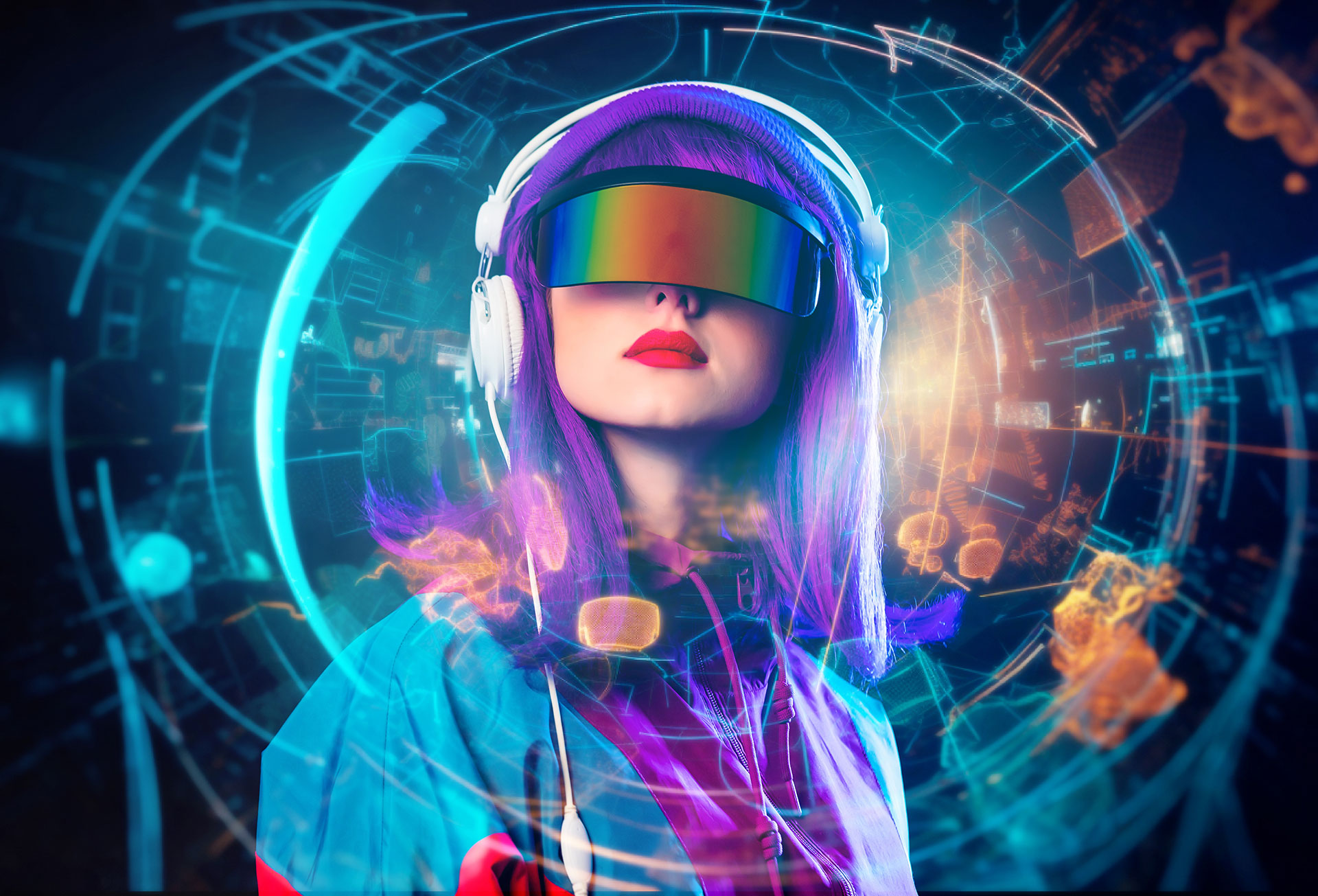The introduction of Apple’s new Vision Pro headset breathed some much-needed life into the conversation around virtual and augmented reality. Despite Meta attempting to will VR into mainstream existence for the last decade or so, Apple’s entry into the market introduces a much broader set of possibilities into the public imagination—a $3,500 price tag notwithstanding.
Big names and shiny devices are only part of the equation though. The actual future of mixed reality will be built on top of truly immersive experiences. The chips, glass and sensors packed into devices certainly matter, but the sensory experience people have inside that device—visual design, gameplay, sound, music—is what will bring mixed reality to the mainstream.
So, what’s in store for VR developers and product designers who want to deliver fresh realities? If the path that mobile apps have taken is any indication, it will be a rough road ahead for mixed reality applications that want to include popular music in these new and groundbreaking experiences.
Music: The Complex, Essential Key To Immersive Experiences
Music is the glue that holds immersive digital experiences together. Devices can effectively trick our brains and bodies into thinking they’re really climbing up a cliff, or taking batting practice from a major league pitcher, but music actually grounds us in those moments. It creates an emotional, personal connection with people that can’t be recreated with code. Music can motivate, energize and calm us, and even connect people to very specific times and places.
However, as creative executive and wellness expert Frank Fitzpatrick wrote, “One ongoing issue for the past iterations of the VR/AR product and the companies that have developed them has been the lack of sufficient attention to and investment into creating the optimal audio experiences to accompany immersive visual environments.”
One reason audio has fallen flat is that music is incredibly hard to build into apps. Most product managers tasked with adding popular music to an app will likely run the other way, fast.
Why? Because music licensing still largely works the same as it did 50 years ago. Licensing deals usually require companies to enter lengthy negotiations, deliver significant cash advances, give up a percentage of app revenue and oftentimes even equity in the company. Once they get past those hurdles, they still have to figure out how to store, stream, monitor and report on all the songs played. The infrastructure required to do it all results in companies basically having to build a whole new product inside another.
This can take a year or more of development time, a lot of money and almost as much effort from lawyers as it takes from engineering teams. We often think of apps being the product of hundreds of hours spent writing code, but when music licensing is involved, it’s often the product of just as many billable hours from teams writing legal briefs.
This is a lesson today’s dominant social platforms learned a while ago.
What VR Can Learn From The Evolution Of Music On Social Platforms
Today’s dominant social platforms all understand how important music is to their user experience. Companies like TikTok, Meta and Instagram, and Peloton have all stepped in to create licensing platforms that pay artists and labels while making it easy for creators to put the music they want into their content.
These new revenue channels are a boon for both record labels, which get to open up new revenue streams, and artists, who can potentially get their music in front of millions outside of music streaming platforms. According to a Goldman Sachs study, streaming revenue from emerging digital platforms is the next high-growth segment, expected to generate more than $16 billion by 2030.
This model—big companies cutting deals for its users—works great for social media, a mature market that has largely consolidated down to a handful of very rich winners. They have the suits and hoodies necessary to create the infrastructure for music licensing and streaming.
It’s going to be extremely tough to recreate in the mixed reality space where the big players are focused on devices. App creation—including licensing the music necessary to create those immersive experiences that are the future of the industry—will be left to smaller developer studios without those same resources.
Don’t let licensing choke innovation.
It was a hard road for social platforms and the music industry to learn to work together. The music industry filed multiple massive lawsuits and threatened more against several of the bigger platforms. The temperature has come down a bit now with mutually beneficial licensing deals being worked out (though some companies are still learning the hard way).
Because the VR industry is still in a very early, fragile stage, it could be the death of many smaller mixed reality app makers if they are forced to tie up significant resources to navigate their music strategy.
This a burning problem app makers have to figure out, but it’s also a massive opportunity. At the recent Augmented World Expo in Silicon Valley, there were constant conversations on the floor about how to build music into VR and AR experiences.
An entire ecosystem has been built around making tools for developers to write and push code into production quickly, and easily iterate on software. Mixed reality app makers need the same for music to help build popular music into the experiences they create.
The industry’s future hinges on its ability to create personal, emotional connections with users that keeps them putting the headset on again and again. Nothing creates that connection like music.












